First call resolution: What it means, why it matters, and how to improve it
Looking for a contact center solution that can help you track metrics like first call resolution, solve customer queries more efficiently, and much more? Book a product tour of Dialpad's AI-powered customer engagement platform!
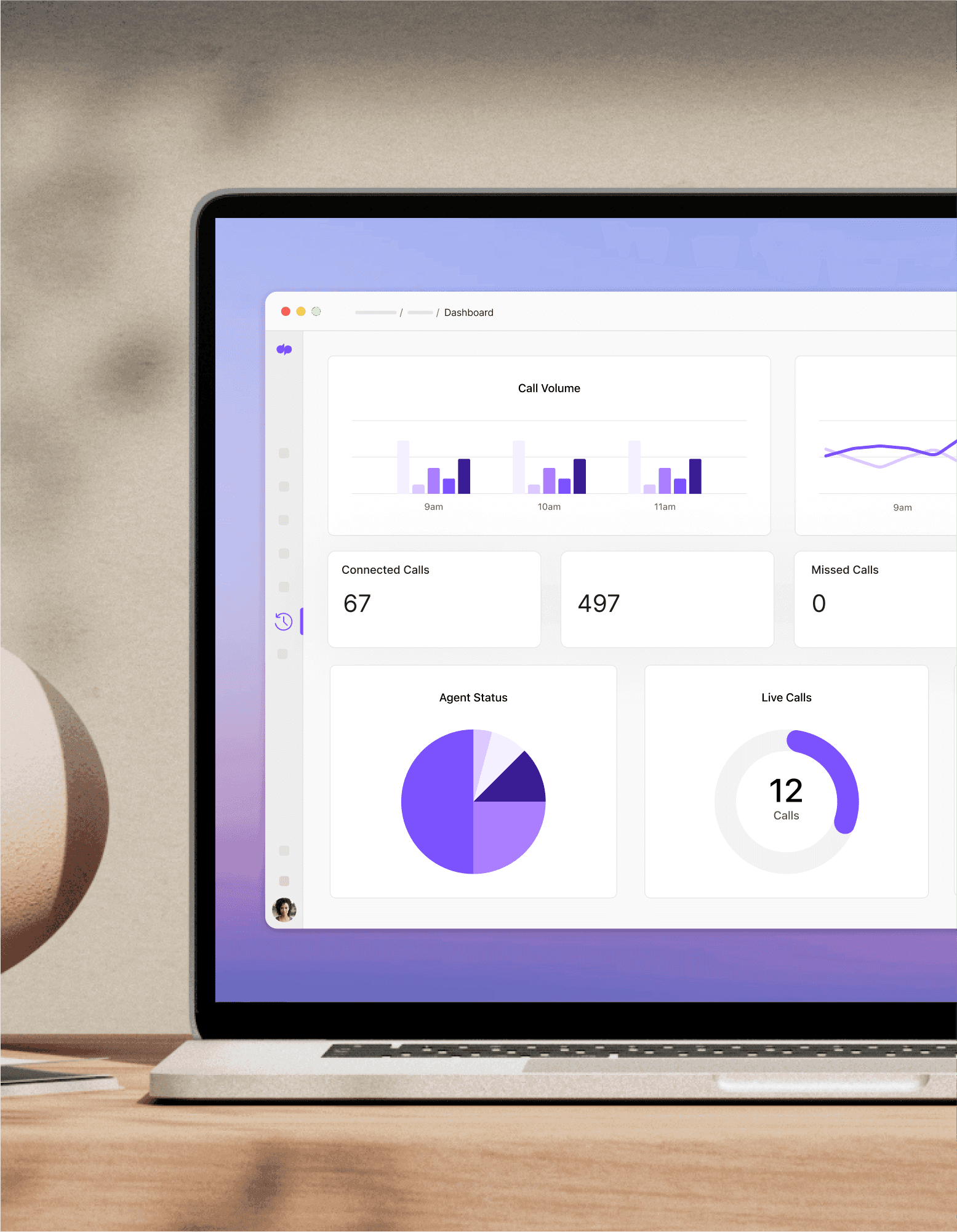
First call resolution (FCR) can come in handy as one of many important metrics to keep track of in the pursuit of exceptional customer service.
This guide will cover everything you need to know about first call resolution, including what it is, how to measure and improve your FCR, and some other metrics to track alongside it, in order to gauge how your contact center or call center is performing.
What is FCR?
FCR stands for first call resolution, right? Well, yes and no. That’s certainly what the acronym meant at first. However, today, FCR can also—and often does—stand for first contact resolution. So, why the broadening of the FCR meaning and what’s the difference between the two terms?
In essence, it all comes down to the evolution of call centers to contact centers. Traditional call centers dealt exclusively with customer calls. Therefore, when assessing if queries were resolved first time, those queries all came in the shape of phone calls. Hence, first call resolution.
Contact centers, meanwhile, interact with customers over a multitude of channels. So, when you’re running such a center, you want to assess resolution rates across those different points of contact. Hence, first contact resolution.
Whether relating to calls or contacts, when it comes to contact and call center metrics, the FCR rate has historically been a popular one for businesses to track.
Some look at FCR in customer service as a direct reflection of how quickly agents are responding to customer calls and how efficiently they’re solving their issues. However, to look at this metric in a vacuum is misleading and potentially dangerous—and we’ll get into that a bit later.
✨ Dialpad tip:
Sometimes, first touch resolution is also used to describe essentially the same metric. Because things weren't confusing enough already!
How to measure first call resolution
Learning how to calculate FCR is mercifully simple. The basic first call resolution calculation is to divide the total number of calls resolved on the first attempt by the total number of first calls your call center takes in a given period:
Total Number of Calls Resolved on First Attempt
________________________________________________
Total Number of Calls
Using this first call resolution formula, you can measure FCR for different periods (such as monthly, quarterly, and annually) to identify patterns and make adjustments.
The formula’s the same when it comes to how to measure first contact resolution. You simply use the total number of customer interactions resolved on the first attempt and the total number of interactions, across all your channels.
Some call centers also pair FCR with talk time, which measures the average length of time an agent spends on a customer call. They may want to see high FCR rates paired with low talk times to maximize the call center's efficiency and profitability, but again, this could easily be a trap.
If agents are afraid of spending too much time on the phone with customers because it makes their metrics look bad, then they may feel as if they have to get rid of callers as quickly as they can, regardless of whether they solved the issue as best they can.
✨ SEE HOW THESE CONTACT CENTER TEAMS DID IT
Grab the Contact Center Playbook, which breaks down everything you need to know, from setup to staffing to optimizing—with examples from real contact center teams across different industries.
First call resolution tips—8 ways to improve FCR without sacrificing the customer experience
No matter what your current FCR is, there’s a good chance you can improve it by taking some thoughtful steps to engage your customers and optimize your internal processes.
Here are eight first call resolution best practices to consider:
1. Consult other KPIs—no one metric says it all
Whether or not your organization believes that your FCR rate is important, you should almost never focus on a single KPI or look at your numbers in a vacuum.
Often, one KPI will also impact another, and by improving (or sacrificing) one, you’ll indirectly be influencing another measurement.
Here are other KPIs that are just as, if not more important, to look at as you’re measuring and benchmarking your contact center’s performance:
Net Promoter Score (NPS)
Customer Effort Score (CES)
Customer Satisfaction (CSAT)
Average Handle Time (AHT)
Of those, NPS is particularly important. A metric that’s commonly used to measure a customer’s satisfaction—and their willingness to recommend your services—NPS does have some correlation with your FCR. (Some studies show that every 1% improvement in FCR increases NPS scores by 1.4 points.)
Your NPS tells you roughly what proportion of your customers will become “promoters” who’ll tell their networks about your business and recommend you (in relation to neutral folks and “detractors” who’ll do the opposite—you don’t want detractors).
Another neat thing about NPS is that it’s not uncommon for companies to share their NPS publicly (usually, to show how much their customers love them), so this might be a good way to benchmark how your company is doing in relation to an industry standard or in comparison to other companies in your space.
2. Run customer surveys
Another more holistic way to gauge your customer experience beyond just FCR is to use customer surveys.
In Dialpad, for example, you can create automated CSAT surveys to find out how satisfied customers were with their experience:
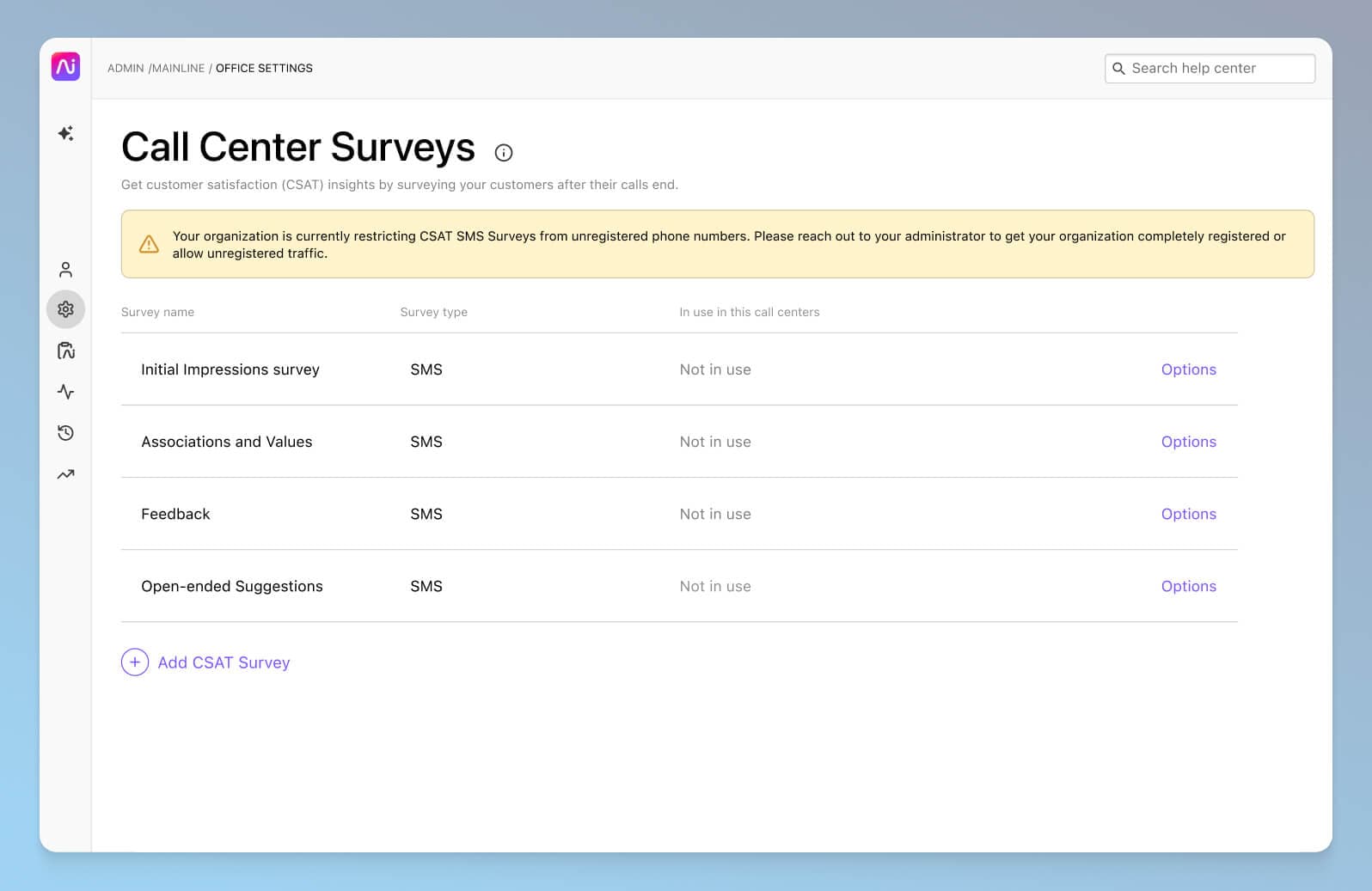
This way, you can hear directly from customers about their thoughts on you and whether or not they believe their problem was resolved on the first attempt.
3. Make it easy for agents to overdeliver
To provide a good customer experience, you must first have a good agent or employee experience.
The easier you can make their jobs, the more efficiently and effectively they can help solve your customers’ problems. For us, this is the key, and that’s why we’ve designed Dialpad’s customer engagement platform to be incredibly user-friendly—its goal is to empower call center teams first.
That’s the whole point of having features like IVR (Interactive Voice Response) menus. Yes, it’s convenient for your callers to punch in a number to reach a specific department—but it also removes that manual work for customer support teams so they don’t have to transfer calls back and forth, while also minimizing the chances of human error.
Other ways that Dialpad can help improve customer experience metrics like CSAT and FCR rates:
Data and analytics at your fingertips
With Dialpad, you have a whole range of dashboards and data that give you a (very close to) 360-degree view of how your contact center is performing.
There are different heatmaps showing things like your average speed to answer and call volume patterns...
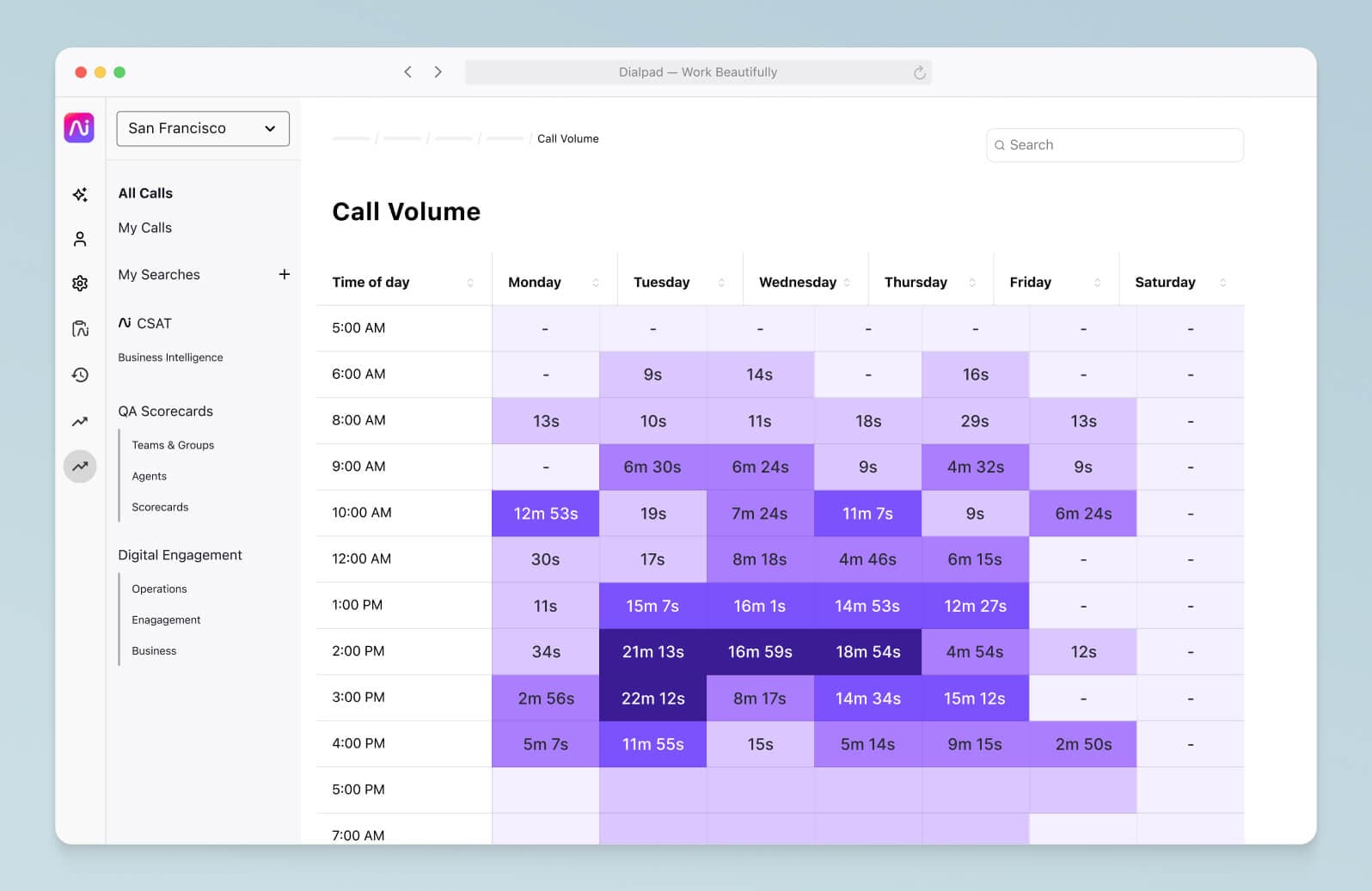
And of course, you can see all the essentials, like answered calls, missed calls, and abandoned calls:

If your goal is to minimize repeat calls and increase your chances of resolving issues properly on the first interaction, having access to data is priority number one.
If you can’t measure it, you can’t improve it.
Real-time coaching—at scale
One of the unique things about Dialpad is its proprietary AI technology, Dialpad Ai. At the most basic level, Dialpad Ai can transcribe your calls—in real time—more accurately than almost all leading competitors:
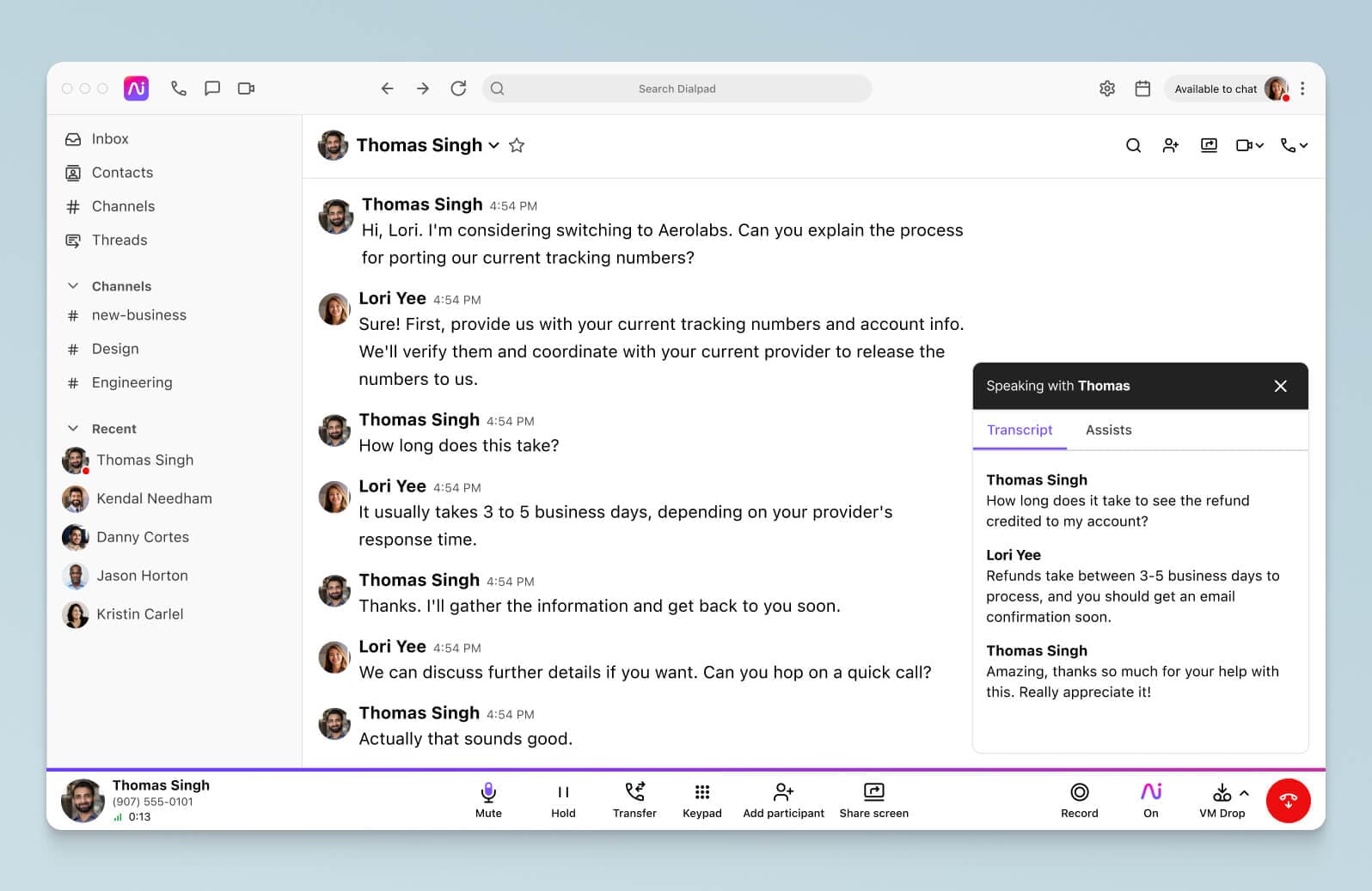
But that one seemingly small feature opens up a ton of options for you that can indirectly improve your first call resolution rate (among other KPIs).
Not only does Dialpad transcribe calls accurately, it can also pick up on specific keyword phrases—you can choose which keywords you want to track (for example, “pricing,” “refunds,” or even competitor names) as Custom Moments—and track how often these are spoken on customer calls!
And maybe most importantly, especially for customer support teams, this speech recognition ability also allows Dialpad to automatically pop up cheat sheets for contact center agents.
They’re called RTA (Real-time Assist) cards, and you can customize each one with tailored tips and notes for agents, and set them to trigger automatically when certain keywords are spoken:
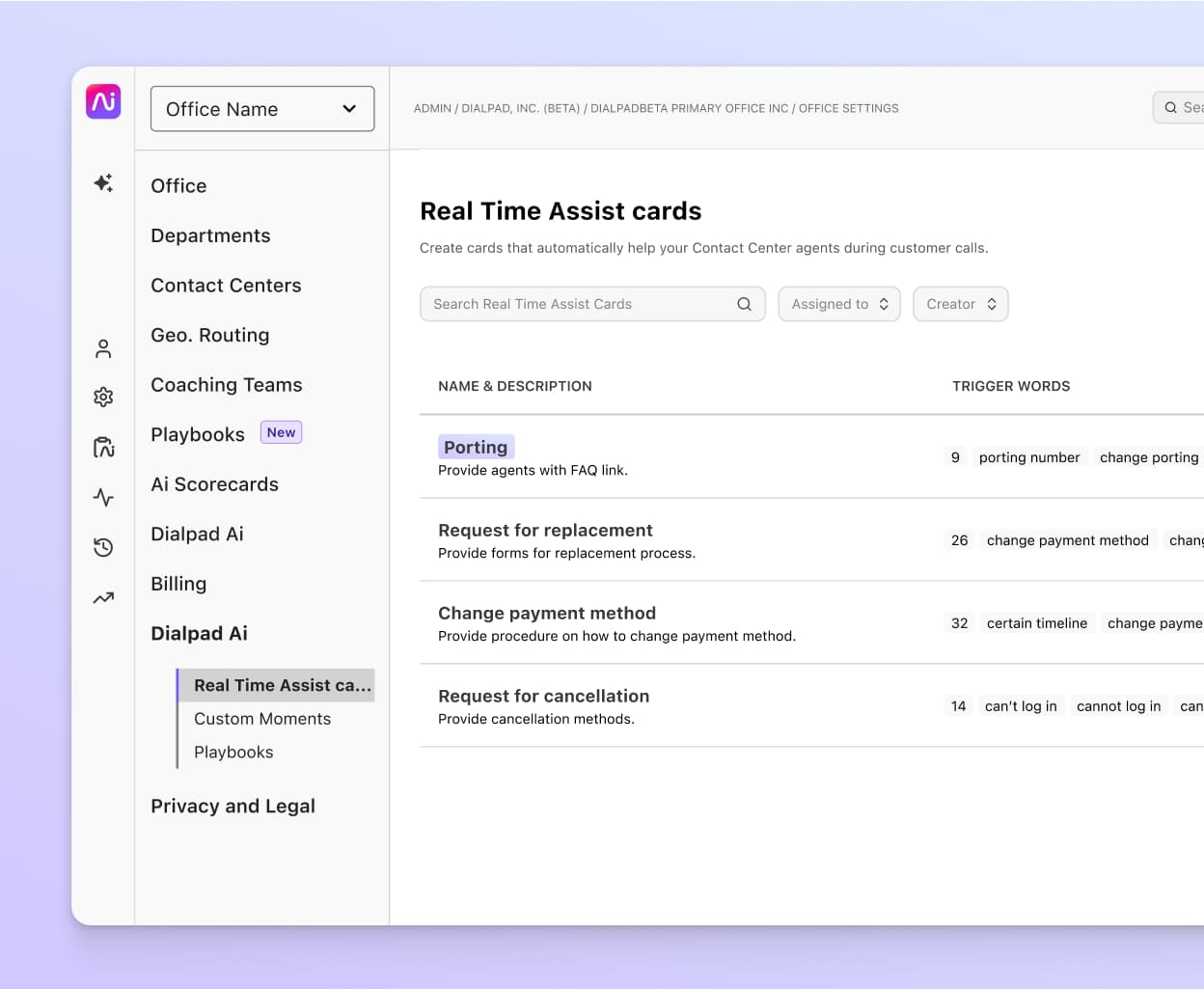
For example, you can create an RTA card with information on your company’s refunds and exchanges policy for:
When the words “exchange,” or “refund,” or “money back” are spoken
Specifically by the caller / customer
And also send a real-time alert to the supervisors on your coaching team when this card is triggered
Can’t coach every single call every time? RTA cards let you coach at scale and give your customer service agents the information they need to maintain good FCR rates—without sacrificing accuracy or quality in their answers.
The bottom line? When you’re thinking about how to improve first call resolution, first make sure that your agents have the best tools to do their jobs.
Want to resolve customer queries more quickly?
Book a product tour of Dialpad to see how it can empower both agents and supervisors to keep customers happy.
4. Have a good call routing strategy (automate what you can)
Every time you transfer someone (especially if they’re already a dissatisfied customer) to the wrong department, you risk dropping the connection or frustrating your customer even more.
Every contact center should have an efficient process in place for routing calls, especially if they’re a large company that provides many different types of products and services. (The larger your business, the more varied your customers and their inquiries will likely be.)
If your business regularly fields calls that need to be answered by different departments, consider implementing call routing based on criteria like language and inquiry type. With Dialpad, you have lots of routing options, including routing by skill level, whichever agent has been idle the longest, and more:

And to help keep call queues as clear as possible, you can also set up your IVR to deliver automated responses to basic questions, which will help increase the possibility of a call being resolved the first time around. (Plus IVR is another way to free up your agents to focus on more complex questions.)
5. Take detailed notes
Here’s one of the simplest yet most impactful first call resolution tips for agents; make sure you keep detailed records of calls.
Tracking your customer service efforts and metrics like CES and FCR rate can be difficult, though, if you’re doing everything manually—tracking tickets, notes, and call history can get jumbled and lost. So, it’s best to have a tool or contact center software that keeps all the information organized and in one place.
For one, it’s essential that agents are able to easily keep track of calls that were resolved in the first interaction, and calls that required a follow-up or callback.
Dialpad integrates with popular software (for example, if you’re using help desk or ticketing software, or a CRM) so that you’ll have clear call records and notes in one place. For example, you can take phone calls in Zendesk through Dialpad’s CTI dialer, and that interaction history will automatically be populated across both platforms:
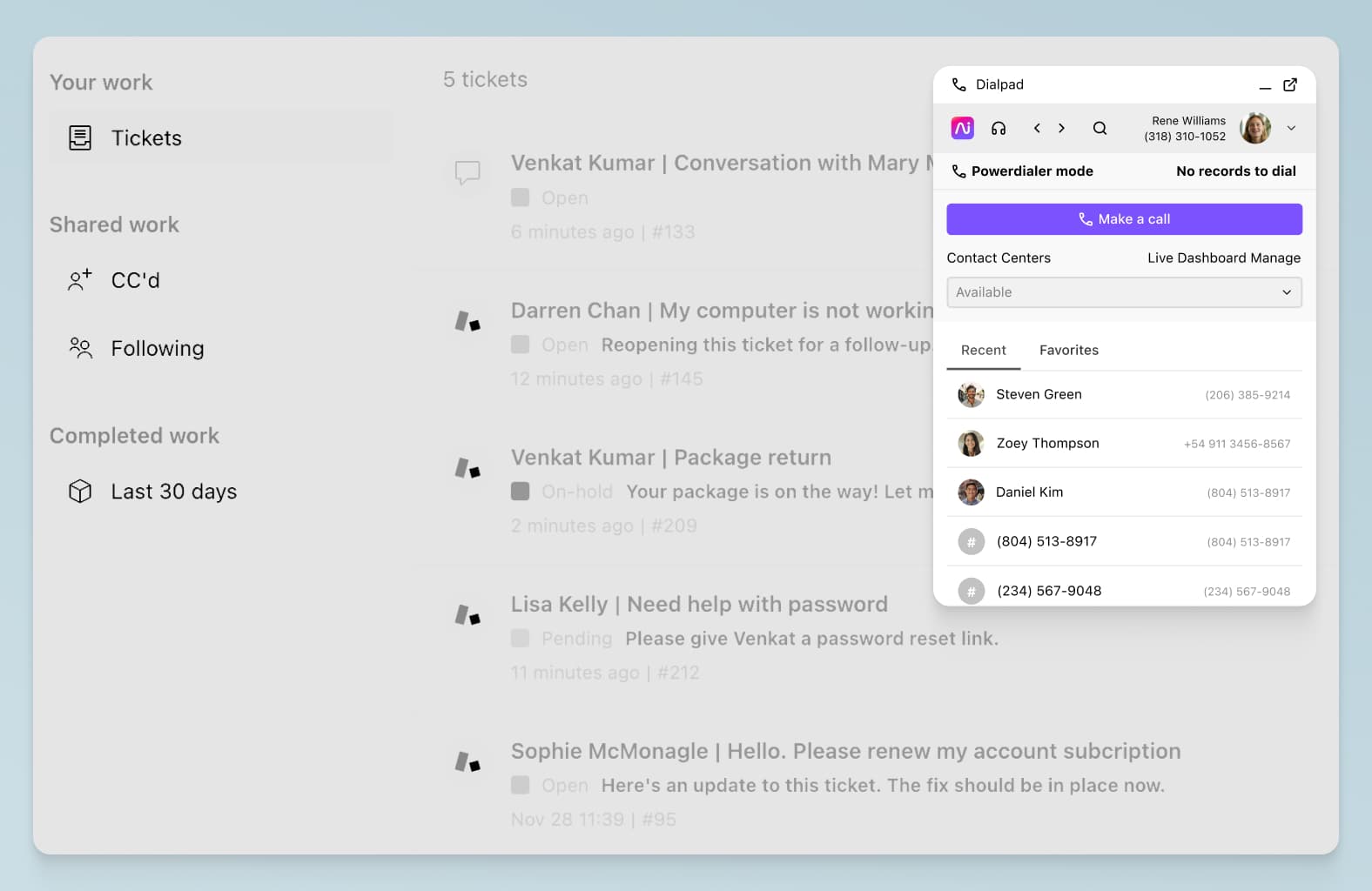
6. Have a knowledge base that covers common questions and issues
Self-service is one of your secret weapons. If your customer support team is overworked or understaffed (or both), one way to help relieve them is to give your customers the option of finding answers themselves.
Every company has a core set of common challenges its customers face. Instead of having your agents repeat the same answers to basic questions over and over again, why not create a knowledge base (here’s ours as an example) or online FAQ section that your customers can find easily? Or, why not host webinars that answer common questions you get from customers?
Many people will often try to find answers to their questions online first, and by empowering them to solve their issues themselves, you’ll free up your agents to focus their time on solving more complicated questions.
The knowledge base can also be helpful if your customers end up calling anyway with common questions. As long as your agents all have easy access to it, they can direct customers to the specific solution quickly, which will reduce wait times.
7. Keep your internal knowledge base organized and accessible
On a related note, your own team should have easy access to an internal knowledge base.
Now, if your public-facing knowledge base is detailed and thorough enough, you may not need another whole separate one that’s internal-only.
Make sure you have clear screenshots and images to help your customers figure out where to click and how to do certain things, especially if your product or software is very visual.
It should also be easy to navigate and use. Otherwise, it’ll just frustrate your customers even more. Here are a few basic ideas:
Organize your information into categories and themes
Use color and design to differentiate themes from one another
Create a search bar to allow people to find specific topics quickly
8. Ask if you solved the problem before leaving the call
One simple, but sometimes overlooked, way of making sure that agents aren’t focusing too much on FCR at the expense of the customer experience? Ask the caller. That’s it.
In this way, a customer relationship is kind of like, well, any other relationship—sometimes, the best way to find out how you’re doing is simply to ask. Make this part of your training materials and build a habit of asking this question before hanging up a call. This gives callers a chance to clarify things or ask follow-up questions.
It’s not the only thing an agent should do to ensure a good experience, of course, but it’s one of those “checklist” items that can give you that added reassurance that your agents are doing things the right way.
First call resolution benefits (+ an important caveat)
That covers how to measure FCR and what you can do to improve the first call or contact resolution rate in your call center. What’s left is to rundown how useful a metric it truly is.
There are unquestionable benefits of first call resolution as a metric to gauge a call or contact center’s service provision.
Firstly, it’s a simple and straightforward metric to understand. On top of that, there is a logical relationship between resolving calls or queries first time and customer satisfaction. After all, most customers will be seeking a speedy resolution to their issue.
However, too much of a focus on FCR can be detrimental. Why?
Namely, because focusing too much on FCR can cause customer service teams to get hung up on finding the fastest, rather than the best, solution for a caller or customer.
This results in a rushed and sloppy experience that can cause an escalation of issues down the line. By focusing on the wrong metric (in this case, speed), you could end up sacrificing the customer experience—and customer retention.
That’s why our first call resolution best practices above focused heavily on using FCR rate in concert with other metrics and sources of data. That way, you get a more rounded picture of customer satisfaction.
Have you been focusing solely on first call resolution?
If your contact center has been focusing only on achieving a high first call resolution rate without considering other metrics, it might be time to reconsider that approach.
Solving questions for customers the first time around is good, but it can’t be the main way or the only way you’re measuring customer satisfaction.
Make sure you’re looking at the right combination of data and metrics, and try to make that information accessible to your team. It’ll help align everyone to the same goals, and also help call center agents hold themselves accountable as well.
Resolve customer queries more effectively
Speed is only one part of the equation. If you need a contact center platform that really empowers your agents and supervisors to help customers solve problems thoroughly, get a product tour of Dialpad to see how it can work for you.








